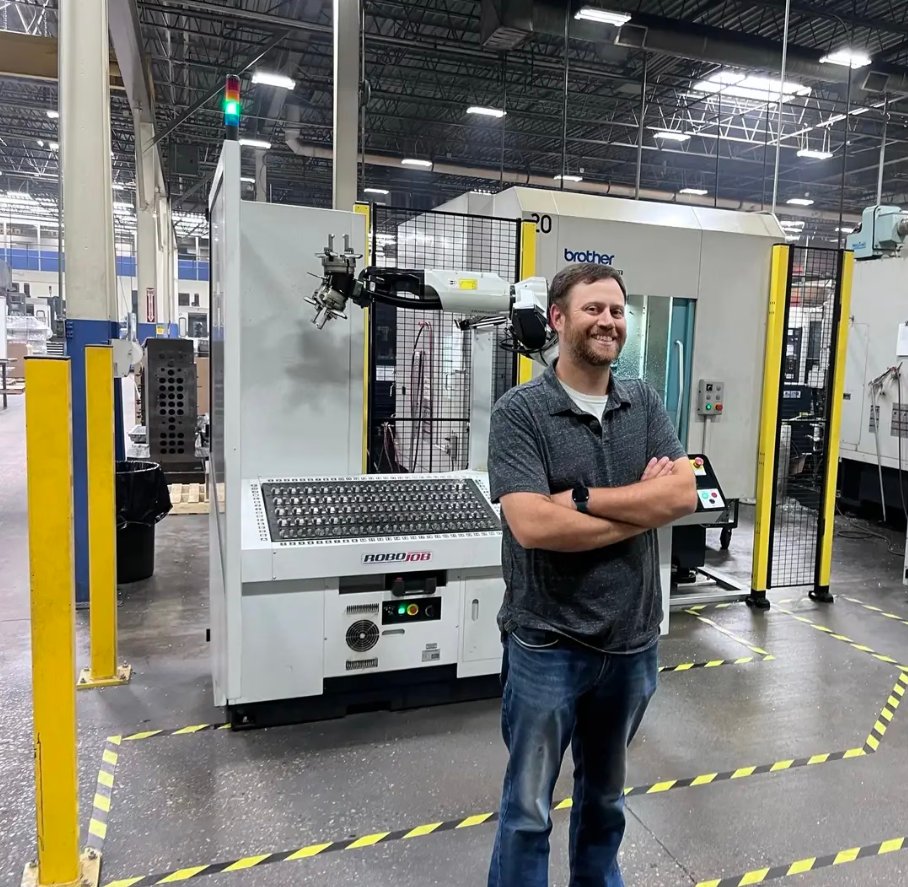
Kris Dee and Associates
Kris Dee and Associates
"Labor rates were going up and our margins were going down, so we had to figure out how not to raise prices for our customers and still maintain our operating margins"
Jeff Majewski of Kris Dee shared with our Craig Zoberis his CNC automation journey.
CZ: Why did Kris Dee automate their CNC machines?
JM: Simply to make a better profit. Labor rates were going up and our margins were going down, so we had to figure out how not to raise prices for our customers and still maintain our operating margins. You can only squeeze so much out of your employees and automation was our next step.
CZ: Tell me what you did to start the automation journey. Where did you begin?
JM: The first thing we did for automation was we looked at where our biggest costs were. Our biggest costs were in set-ups and repeat setups. So, we wanted to eliminate or minimize those. We bought a flexible machining center, and we could take out our set-ups for repeat jobs, you call it up in the system and start running immediately. However, once we had that, we were able to reduce our labor costs per machine hour; however, over time, that number started ticking back up, and the question is, how do you reduce your labor rate per machine hour? The next step was automating our CNC machine tending. How do we make our employees more efficient? That's where we started; we discovered that we needed to automate our machines. We needed to start putting something in front of our CNC machines so that our operators could produce more. That was our next step.
CZ: So, you did some of your own do-it-yourself (DIY) in-house integration with collaborative robots. Please tell me how that process worked and how it turned out.
JM: Back in 2006, we had a Fanuc robot that was caged off for a high-volume part for a key customer. As soon as that part program came to an end, we could not find any use for that robot. We couldn't make it work on anything. We ended up getting rid of that robot and said this is not working; automation isn't for us. Then, I took on a high-volume automotive job. We were running on a twin-spindle machine. It was two machines, and we weren't quite making the margins, so we looked at a collaborative robot, which was less expensive to implement, but we had to implement it ourselves. We created that cell and integrated it to the CNC. We learned how to program the robot, and then after that, when that job went away because we didn't program robots all that often, we couldn't program the next job in a timely manner. So, then we thought, okay, Cobots aren't for us because we can't afford to pay a skilled person to program the Cobots each time there was a changeover. We couldn't afford that as an overhead cost. We went and saw the RoboJob products working and realized I didn't need a skilled automation programmer in my facility. I need my machinists to do their job of machining and not bog them down with programming a robotic pick-n-place.
CZ: Kris Dee now has four RoboJob units installed. You have three on three Brothers and one on a Haas. What feature stands out to you that makes you buy more?
JM: We were completely sold on the ease of the user interface. We go in there, put the size of the material and it automatically tells the operator what to do with the set-up. Everyone on our team here feared this before with the Cobots and it is now not a concern whatsoever. Since we've implemented RoboJob products, everyone around Kris Dee is trying to figure out which parts can be automated with a RoboJob next.
CZ: Tell me more about your team’s culture of automation.
JM: I had one of our machinists come to me today saying "I know we're a little behind schedule on this particular part, can we try to run this on the RoboJob?” He then quickly talked to the application engineer on his own and he said "wow, this would be a great part for the automation". It's now going to save us roughly 100 machine hours a month.
CZ: If you were to give one piece of advice to somebody who's on the fence about automating their machine shop, what advice would you give them?
JM: Don't be afraid. If you don't take the leap, you won't be around in the next five years. Have confidence in the idea of automated machine tending because this is how the industry is going.